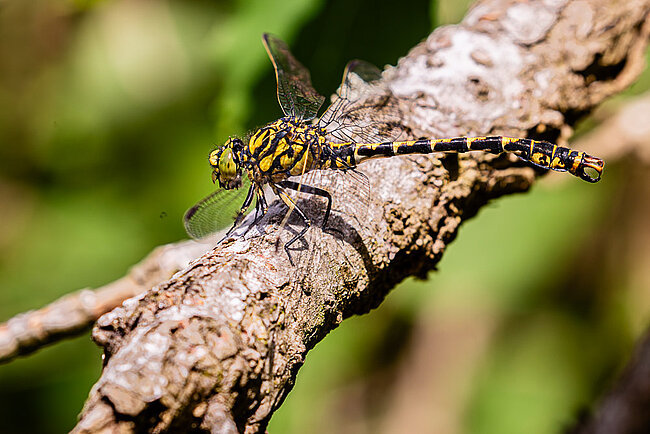It has a body length of 46 to 50 mm and a wingspan of 5 to 6 cm.
The whole body has a black and yellow pattern, which is very variable. There are spots on the upper side of the thorax, which are outlined in black. Their eyes are green.
In males, the abdominal segments S8 to S10 are thickened and bear the pincer-like abdominal appendages that give the dragonfly its name. The upper appendages are usually brown in colour.
The abdomen of the female has yellow triangles on the upper side, which are larger than those of the male. The abdomen is barely thickened at the end.
The Small pincertail is a species that occurs particularly in the lower reaches of streams or rivers with strong currents. However, it can also be found in oxbow lakes or larger ponds if there is a river nearby.
Literature:
- K.-D. Dijkstra, Libellen Europas, 2. Auflage, Haupt Verlag Bern 2021,ISBN 3-258-08219-6, S. 207f
- K. Sternberg / R. Buchwald, Libellen Baden-Württembergs, Bd. 2, Ulmer Verlag Stuttgart 2000, ISBN 3-8001-3514-0, S. 327–348
- H. Wildermuth, A. Martens, Die Libellen Europas, Quelle & Meyer Wiebelsheim 2018, 3-494-01690-9, S. 477 ff
Websites:
- https://www.libellen.tv
- https://www.libellenschutz.ch
- https://www.libellenwissen.de
- https://www.waldschrat-online.de

